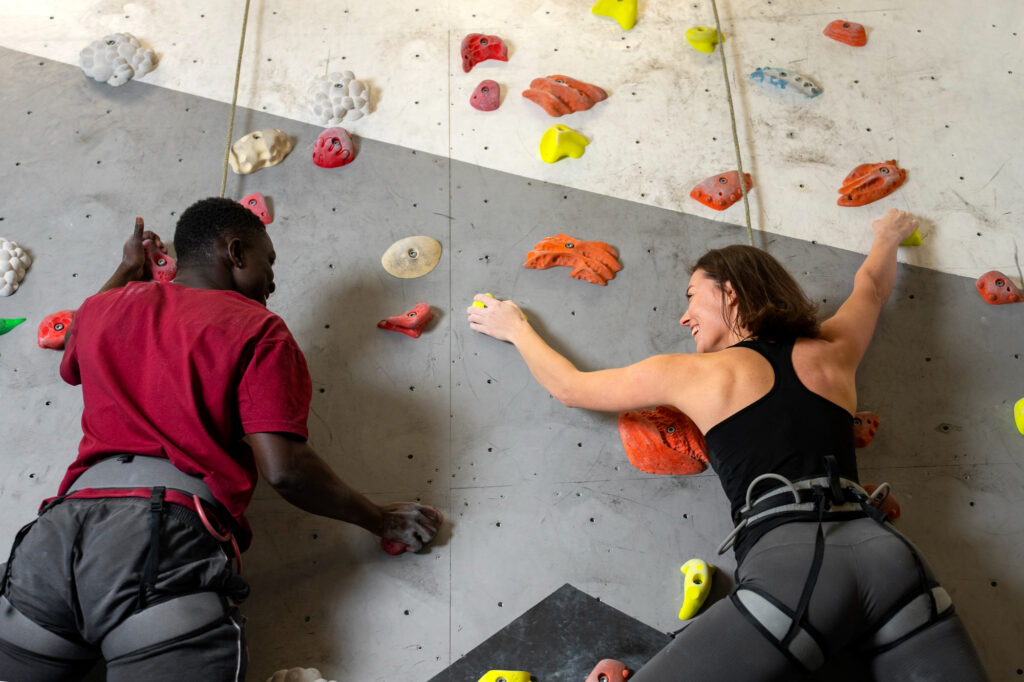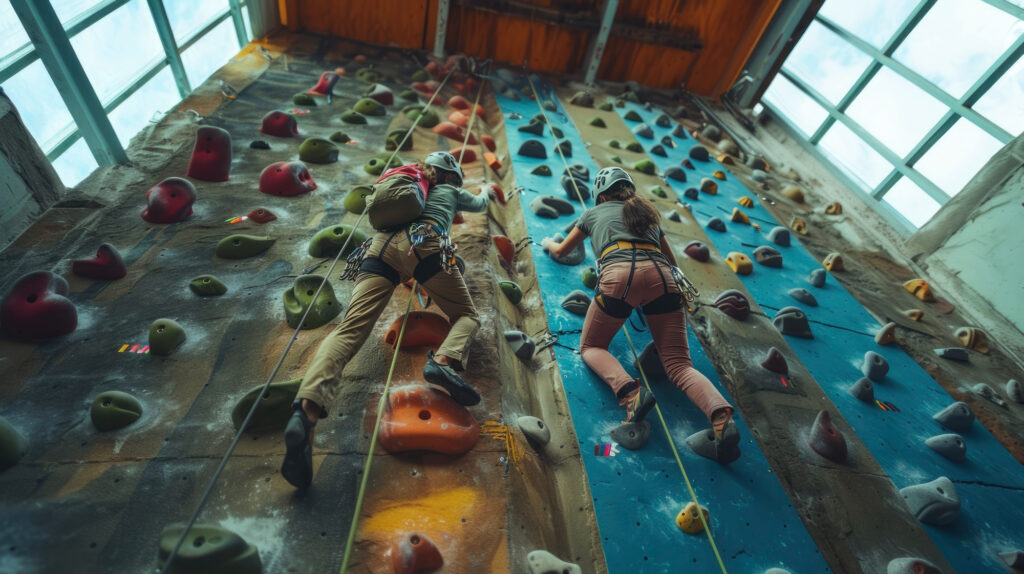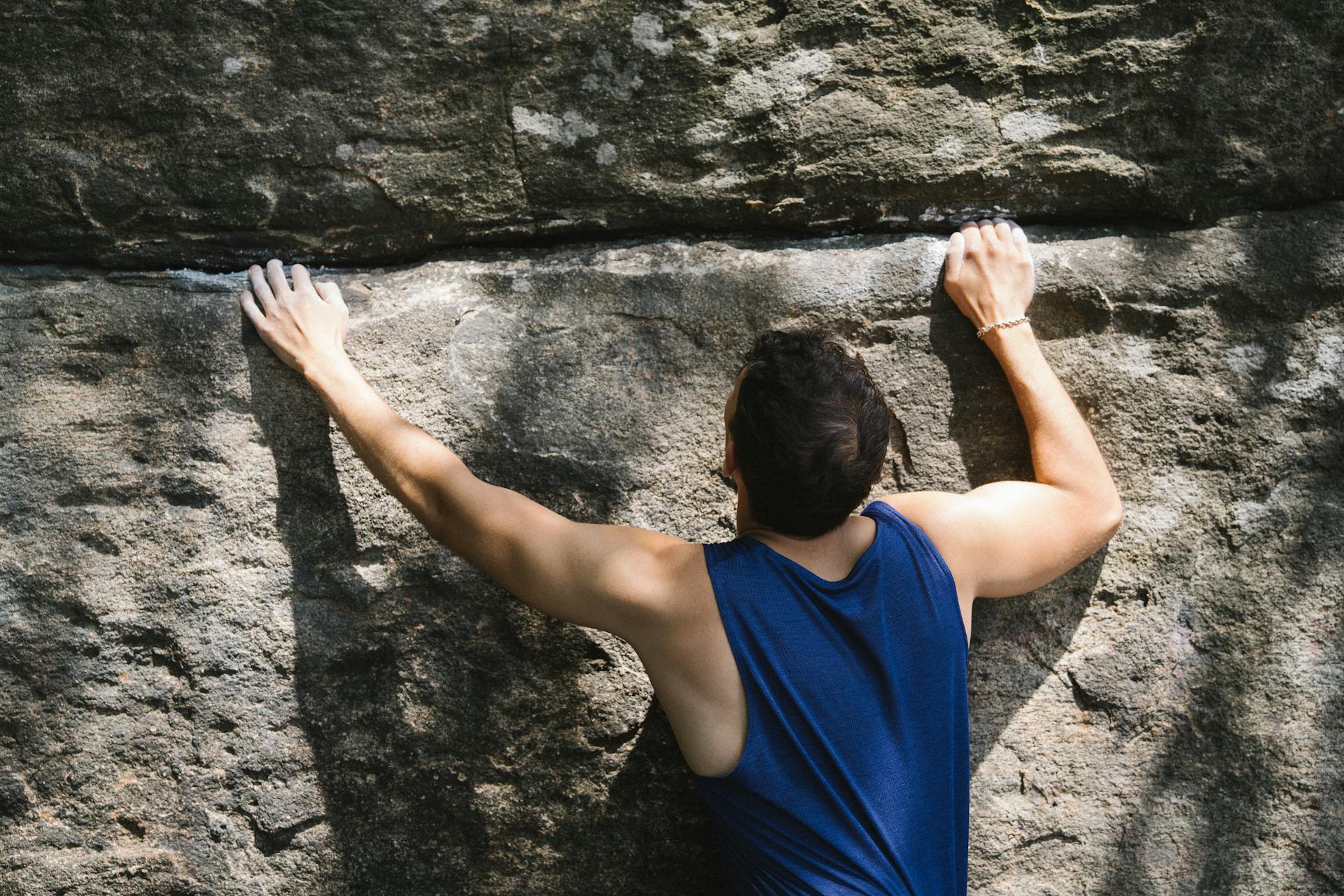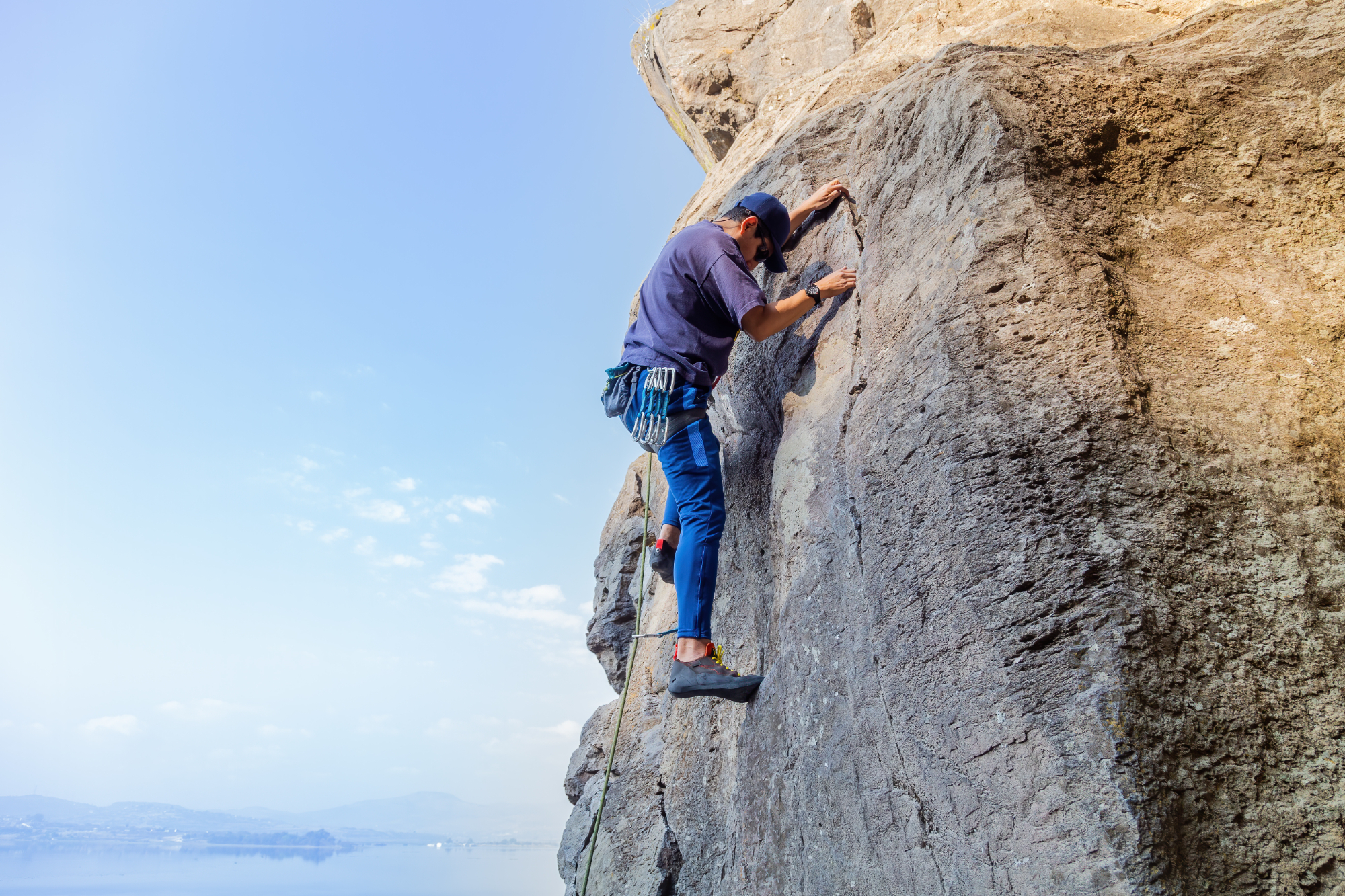Understanding the Demands of Climbing: Climbing is a multifaceted sport that requires a distinct mix of various skills and physical attributes.
- Strength is a key component, involving pulling power exemplified by climbing exercises like pull-ups and lock-offs. Finger and grip strength are crucial for holding onto small, challenging holds, while core strength helps maintain stability, particularly on overhanging routes.
- Endurance is another vital aspect. Climbers need muscular endurance to sustain their effort through long climbs, preventing fatigue. Cardiovascular endurance becomes essential on extended routes where aerobic capacity plays a role in performance.
- Technique can’t be overlooked. Efficient footwork and proper body positioning allow climbers to use their energy wisely. The ability to read and analyze routes facilitates effective problem-solving, and solid balance and coordination help maintain control on tricky sections.
- Flexibility contributes significantly, too. A good range of motion is necessary for reaching distant holds and executing dynamic movements without strain, enabling climbers to navigate various climbing styles effectively.
Each of these elements plays a role in a climber’s performance, and improvement in any area can enhance overall ability. Aspiring climbers need to prioritize climbing training in these areas to tackle the challenges of the sport successfully.
A Systematic Approach to Climbing Training

Frequency and Volume: For beginners, 2-3 sessions a week of climbing training for beginners. Work on developing your technique while climbing easy routes. This will establish confidence and shape. As you move to the intermediate level, go for 3-4 sessions a week. Test yourself with mixed routes and varying difficulty levels to improve your skills. For serious climbers, 4 or more times a week is the way to go. Design methodical climbing training plans that are aimed at specific facets you wish to enhance.
Variety: Practice different types of climbs like bouldering, sport climbing, and top-roping. They all present varied challenges. Moreover, mix the angles of the walls you practice on. Train on slabs for balance, vertical walls for strength, and overhangs for stamina. Don’t overlook practicing on different types of holds like crimps, slopers, and pinches to maintain a balanced grip.
Focused Practice: Spend special sessions on practicing specific skills. Footwork drills can go a long way in sharpening your accuracy. Practice rest techniques to save energy during climbs. Practice dynamic movement to get your overall agility right. Spend some time studying the route and visualizing the sequence before you begin a climb. It can contribute a great deal to your performance.
Strength Training

Pulling Exercises: Add pull-ups to your regimen. They’re necessary for back and arm development. Dead hangs will serve to enhance grip and forearm development, both necessary for climbing. Add rows to counterbalance the muscles you create so that your muscles are harmonious overall.
Core Training: Listen to your core. Planks are great for building core stability. Leg raises are a good way to build your lower abdominal muscles, which are important during climbs. Russian twists will make it easier to rotate on difficult routes by building rotational core strength.
Antagonist Training: Don’t miss out on the push exercises such as push-ups. These will counterbalance pulling muscles and are a prevention to injury in the long run. Resistance band is also an ideal way to condition your rotator cuff muscles which are essential to shoulder health.
Finger Strength (Caution): Be careful when dealing with finger strength. Hangboarding may be useful for climbers who want to elevate their performance, but do it gradually. Always seek proper guidance when implementing this high-level training. Fingers may get overtrained, resulting in tendon injury, which is hard to recover from. Always train with safety first.
Endurance Training
Climbing Endurance: Work on your endurance by completing “laps” on easier routes. This involves climbing several routes in a row without resting for long periods of time. You may find this technique useful in enhancing your capability to climb for long periods without exhaustion. Another useful technique is the 4×4 method in bouldering, where you complete four boulder problems, rest, and then repeat the process. This serves to condition your body and develop your strength for shorter climbs. You may also attempt longer climbs that are under your maximum grade to gradually improve your endurance without overexerting yourself.
Cardiovascular Endurance: Activities like running, swimming, and cycling can significantly improve your overall fitness. These climbing fitness exercises both increase your stamina and the heart and lung capacity needed for climbing. Incorporating interval training, in which you switch between brief intervals of max effort and rest, can really get your cardiovascular system fired up. This method gets your body accustomed to the varying demands of climbing.

Technique Refinement
Footwork Drills: Practice is perfect. Practice silent footwork to create precise and quiet foot placements. This is essential for keeping balance and saving energy on the wall. Adding techniques such as flagging and drop knees can refine your body positioning. These techniques help you remain balanced and reduce climbing time.
Body Positioning: Keep your weight evenly distributed over your feet to stay stable. Effective use of your hips can result in smoother motion. Try not to move your arms unnecessarily, as this can waste energy and disrupt your balance.
Resting Techniques: Find out how to rest on the wall using natural resting positions. Getting into a comfortable position can help you recover without descending. Moreover, shaking out your arms for a moment can increase blood flow and decrease fatigue, setting you up for the next part of your climb.

Mobility and Flexibility
In order to maximize your workout regime, it’s essential to begin with dynamic stretches. The movements act as a warm-up properly getting your body ready for the physical demands that lie ahead. Include arm circles which loosen and warm up your shoulder joints, opening up a wider range of motion in your exercises. Leg swings are another great dynamic stretch; they loosen your hips, which is important for fluidity and stability in your movements. In addition, torso twists activate your core muscles, which increases your overall balance and coordination. These dynamic stretches do more than just get your muscles ready for exertion; they also encourage increased blood flow, which is important for optimal performance. Once you’ve completed your workout, it’s time to shift your focus towards static stretching.
Holding stretches for around 30 seconds can dramatically improve your flexibility over time. Pay particular attention to your hip flexors, hamstrings, and shoulders as these areas often require extra care and attention. The inclusion of practices like Pilates and yoga in your regimen can increase your flexibility, balance, and core strength further. Pilates and yoga focus on the use of controlled movements and deep stretching that are priceless to keep a flexible body. This adaptability is particularly useful when climbing activities are being undertaken since it enables a greater scope of movement and enables you to reach those difficult holds with greater facility.

Injury Prevention and Recovery
Just as important as the exercise itself is the recovery process. Prioritize sleeping well, since this is when your body conducts necessary repair mechanisms for the muscles and also regenerates your overall well-being.
An eating plan is important, as well; providing your body with the proper nutrients gives you the energy you need not just to exercise but to also recover efficiently after hard training. Hydration is yet another important factor—making sure you get loads of water into your system helps keep your body running at top capacity to aid digestion, circulation, and muscle recovery. It’s also important to be in tune with your body when doing this process. If you’re feeling drained, it’s okay to take a day of rest and let your body catch up. Resist the urge to grind through pain because it is likely to do more damage.
If you do find that you are suffering from pain which lingers, then professional treatment is always the best option. Also, never underestimate the role of proper warm-up and cool-down. Not only do they get your body ready for the intense work involved in climbing but also drastically decrease the risk of soreness and injury after it. By putting recovery first and doing injury prevention measures, you can make sure that your climbing experience is enjoyable and successful.

Mental Training
Visualization: Take time to go through tough routes in your mind prior to attempting them. Visualize every move distinctly in your mind. This makes your brain familiar with what lies ahead and can enhance your performance.
Focus and Concentration: Utilize mindfulness techniques to sharpen your concentration. Simple breathing exercises can quieten your mind and maintain distractions away. Regular practice can boost your clarity and make you present.
Conquering Fear: If heights or challenging situations get under your skin, begin in small steps and progressively confront your fears. Go to lower climbing areas initially, then gradually push your way higher. The more consistently you expose yourself to these challenges, the more at ease you’ll feel.
Core Principles
- Consistency: Training regularly is better than squeezing in the occasional training session. Target a regular schedule that maintains your level of skill and develops your endurance with each passing year.
- Progression: Don’t dive into high-intensity training. Gradually increase the intensity so your body can adjust safely. Incremental gains create lasting progress.
- Specificity: Target the muscles and skills necessary for climbing. This specialized climbing training makes you a better climber and ready for whatever challenge comes along.
- Balance: Combine various types of climbing training to prevent overuse of specific muscles. Incorporate strength, endurance, and flexibility exercises into your routine.
- Enjoyment: Recall that climbing needs to be a fun experience. It should not only challenge but also be enjoyed and satisfying. Make it exciting and rewarding for you to motivate yourself.




